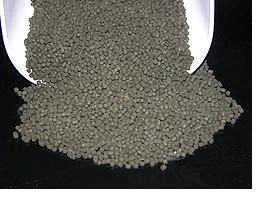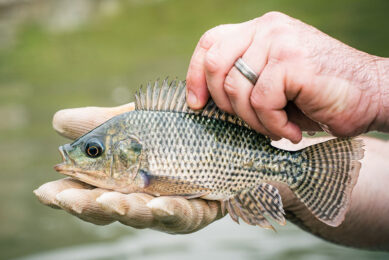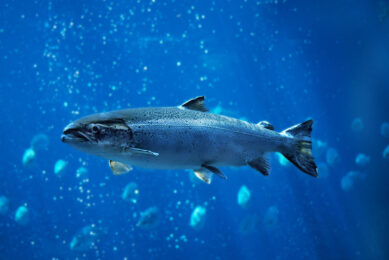Alternative fish feeds use less fish meal and fish oils

As consumers eat more fish as part of a healthy diet, U.S. Department of Agriculture (USDA) scientists are helping producers meet this demand by developing new feeds that support sustainable aquaculture production.
Commercial fish farms have traditionally fed feeds that include high levels of fish meal and fish oil, according to fish physiologist Rick Barrows with USDA’s Agricultural Research Service (ARS).
<-<-Fishmeal-free diet for California yellowtail containing 30% spirulina
But the fishmeal in these feeds comes from small, bony fish species like menhaden, herring and capelin, which are in short supply.
Also, more people around the globe are turning to fish as a source of lean protein, driving the growth of aquaculture worldwide. Aquaculture now supplies half of the seafood produced for human consumption.
Concentrated plant proteins
To satisfy these demands, Barrows and his colleagues at the ARS Small Grains and Potato Germplasm Research Unit in Hagerman, Idaho, are developing alternative fish feeds made from concentrated plant proteins.
Barrows produces the feed himself using a piece of food manufacturing equipment called a "cooking extruder."
Barrows is formulating and manufacturing feeds for several fish species, including trout, salmon, white sea bass and yellowtail.
At the ARS National Cold Water Marine Aquaculture Center in Franklin, Maine, research leader William Wolters works with Barrows to develop diets for Atlantic salmon, using concentrated plant proteins.
Fish nutritionist Rick Barrows examines flax oil that will be infused into pellets for rainbow trout feed.
Protein levels in most grain and oilseed sources are low and need to be concentrated to reach the high protein requirements of fish.
Comparison studies
Wolters is currently evaluating six experimental diets which contain combinations of alternative proteins, plus a fishmeal diet being fed to fish for comparison.
According to Wolters, the ongoing studies seem to indicate that the modern alternative diets work better for the fish than previous alternative diets.
Warm water fish
Feeds for warm-water fish are being developed at the Harry K. Dupree Stuttgart National Aquaculture Research Center’s facility in Fort Pierce, Fla.
ARS fish biologist Marty Riche is working with Barrows to develop feed for pompano, one of Florida’s highest valued fish.
Riche uses ingredients such as corn, gluten meal, and soy proteins to develop feeds that contain less fishmeal.
Read more about this and other aquaculture-related research in the October 2010 issue of Agricultural Research magazine.
Also read: New fish feeds made from fish byproducts
Join 26,000+ subscribers
Subscribe to our newsletter to stay updated about all the need-to-know content in the feed sector, three times a week. Beheer
Beheer









 WP Admin
WP Admin  Bewerk bericht
Bewerk bericht